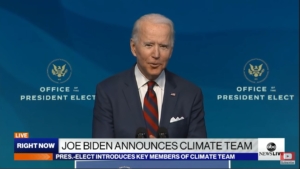The Fight Over Strategic Minerals, Writers Fit to Vet, and 23 & Me & You?
Here’s What You Need To Know
While you were watching the Olympics or glued to the latest 24-hour news cycle, Toyota Motor Corporation announced that it is preparing to rollout an electric engine that includes as much as 50 percent less rare earth minerals due to its concern about a future shortage of supply. This seemingly innocuous announcement, however, is a rather public display highlighting the emerging fight over strategic minerals that will have major innovation, industrial, national security, and policy implications in the future. Here is our analysis to help you navigate this issue as it gains prominence:
- What Are Strategic Minerals? Strategic minerals is a broad term to group various rare earth elements and metals together like platinum, uranium, phosphorus, and others. These minerals are critical for nearly every aspect of modern life including electronics, smartphones, electric vehicles, agricultural products, defense technology, and more.
- Why Are Strategic Minerals In High Demand? The consumption of these minerals outpaces the amount of supply, which is why Toyota’s announcement was important. Control of mineral deposits is heavily concentrated in a limited number of countries and companies, making unpredictable price and availability fluctuations common. For example, Chinese companies control 90 to 95 percent of the rare earths market, 64 percent of the world’s coltan supply is located in the chaos-filled Democratic Republic of the Congo, and South Africa and Russia control nearly all of the world’s platinum reserves – meaning that economic and political tensions caused by the inequality of these resources will escalate as the supplies become more scarce.
- Strategic Minerals And U.S. National Security: Given their prominence in military technology and the manufacturing economy, access to strategic minerals is a national security consideration. Semiconductors, microchips, and programs like the F-35 Joint Strike Fighter and B-21 deep strike bomber depend on these minerals, and attention is being paid to the need to implement a policy to lessen the stranglehold of a country like China, which has leveraged its advantage in rare earths and used it to exert political pressure on other countries in the past.
- The Looming Mineral Shortage: Technologies like electric vehicles and smartphones require the extraction of strategic minerals to produce, but as more ambitious production goals are set, as a recent analysis by Recurrent Investment Advisors found, it is increasingly unlikely that the supply can meet the demand, particularly in countries where supply chains are underdeveloped or nonexistent. Further, the existing production levels must increase by an exorbitant amount, and this inability to extract the minerals will lead to exponentially higher prices due to scarcity.
- The Challenges To U.S. Domestic Mineral Development: The development of strategic mineral deposits, of which there are thought to be large repositories in the Western U.S., is viewed as “destructive” by elements of the environmentalist movement because of the pollution that may result from mining operations. In addition, the environmentalist movement opposes the Administration’s decision to open federal lands in the Western U.S. to mining, preferring to “protect” the lands rather than “open them up to mineral development.”
- What Does The Policy Environment Look Like Going Forward? With an executive order issued in December on a “Federal Strategy to Ensure Secure and Reliable Supplies of Critical Minerals” that explores increased domestic exploration and streamlined permitting for mining, and investment in efforts to extract rare earths from coal mining waste, the policy environment is ripe for harnessing America’s domestic strategic minerals – in a similar way domestic energy has been before it.
The never-ending quest for innovation is incumbent on the ability to develop new technologies, which in turn, are absolutely dependent on strategic minerals. Bringing new technologies to market means bringing down the costs of acquiring them to make them accessible to more people. Yet more of these technologies are demanding more of these minerals, leading towards higher costs and dwindling supplies. Everything from cars to wind turbines depend on them, suggesting that the key to more efficient and effective technologies is inextricably linked with getting strategic minerals out of the ground unless and until someone can discover an alternative to them.
News You Can Use
ALL THE WRITERS FIT TO VET
Subscribe to Receive Insights
"*" indicates required fields
If you blinked, you may have missed The New York Times newest tech opinion writer. Quinn Norton, the former head of opinion writing on technology for Wired magazine, was hired and fired by the Times within seven short hours. After the hire was announced, a “newly curious” public unearthed a collection of old tweets from her Twitter account that used slurs and “revealed a friendship with [an] infamous neo-Nazi.”
Criticism mounted on Twitter, and the political and reputational damage resulting from the hire led to the editorial page editor releasing a statement calling the disparaging tweets “new information to [the Times]. Based on it, we’ve decided to go our separate ways,” which goes to show that whether in politics or business or media, vetting matters.
ENDING “STOLEN CAR” MAJORITIES
Veteran Capitol Hill advisor Michael Boland has a solution to fix what he deems a “broken process” in government where the political party in power “drives its majority like a stolen car,” misusing it “to dictate a policy outcome.” Rather than bring one policy prescription to the floor of the House or Senate for a vote, Boland instead suggests returning to a time when multiple alternative prescriptions were brought to the floor to be debated and voted on, with the proposal garnering the most votes prevailing.
In addition to living up to the Constitution’s division of power to insulate government “from the passions of the moment,” Boland believes that such a fix will lead to better policy results and make people less angry about today’s two-party system. While this step may help restore integrity to the internal process by which government works, it may also help strengthen the republic in another significant way: by making the public less susceptible to being influenced by social media bots that feed off public anger.
23 & ME & YOU?
With the personal genetics business booming, can genetics-based science be applied to dating to find your soulmate? With services in existence that collect DNA to match users with “genetically compatible mates” for only $15.99, it would appear the answer is yes. But a Smithsonian magazine article shows that the science behind this is not yet proven.
Personalized-genetics dating services operate on the assumption that certain genes create pheromones, or chemical signals, that make people more or less attractive to a potential mate. However, scientists who have studied pheromones have defined them differently or concluded that they have yet to be found at all, meaning that DNA dating may not get one closer to love than algorithms in Tinder or Bumble, which in turn may prompt more attention from regulators towards the burgeoning genetic testing industry.
IRS #RESISTANCE TO TAX REFORM
Due to a little-known memorandum signed by the Treasury Department in 1983, the Internal Revenue Service (IRS) is largely exempt from submitting its rules to The White House’s Office of Information and Regulatory Affairs for oversight like every other executive agency, an issue that has gained new urgency now that the IRS is in charge of implementing the tax reform law. Without oversight, IRS bureaucrats can impose their own policy judgments and cause impediments to executing the law, which the IRS has already done in declaring that most taxpayers were not able to deduct prepaid 2018 property taxes on their 2017 returns before the new law took effect.
In an ironic twist, the President’s own Treasury Department is stonewalling the implementation of a law he championed – over the guidance of an executive order he signed at the beginning of his term to reduce tax regulatory burdens – suggesting that the easy part may have been getting tax reform passed through Congress in the first place, rather than its implementation by the bureaucracy.
STOP, DON’T RUN, FROM PRESIDENTIAL POLITICS
With little-known candidates like Maryland Congressman John Delany and New York businessman Andrew Yang already running for the Democratic Party’s nomination for president in 2020, columnist Jonathan Bernstein asks why obscure candidates and those with low practical chances to win the nomination instead run for more realistic offices they could actually win and make a policy impact.
Despite the aberration of first-time candidate Donald Trump winning the presidency, Bernstein considers running for the highest office in the land to be “significant wastes of talent” for politicians who have not previously held statewide elected office, faulting both a “political culture and a political media which sees far too many things through presidential election politics.” Such advice could lead to Democrats fielding strong candidates who compete in winnable races down-ballot, an approach that could reverse losses at the state level and make the party more competitive nationally – if only they would heed it.



